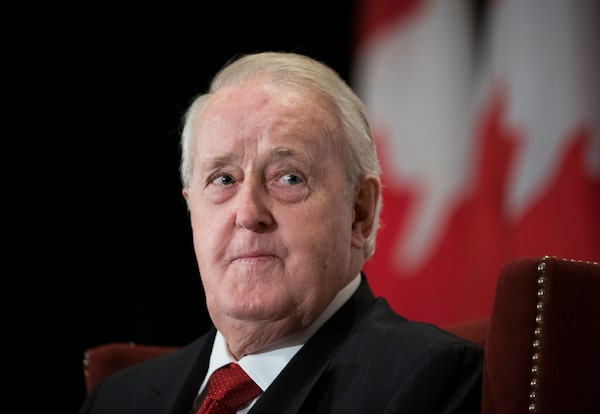
Brian Mulroney, Canada’s 18th prime minister is calling on Canadians to embrace what he calls 'a new national policy' that would commit Canada to achieving a population of 100 million by the end of the century.Fred Lum/The Globe and Mail
On Brian Mulroney’s watch, Canada almost tripled the number of immigrants coming to Canada each year, from fewer than 90,000 people to more than 250,000.
Now Canada’s 18th prime minister is calling on Canadians to embrace what he calls “a new national policy” that would commit this country to achieving a population of 100 million by the end of the century.
“If we are going to maintain … our internal strength and our growth and our capacity and our outside influence, we need more people – a lot more,” Mr. Mulroney said Tuesday at a forum presented by The Globe and Mail and by Century Initiative, which champions the goal of a Canada that is 100-million strong by 2100.
Increasing the population by more than 60 million people would be “an historic and challenging initiative,” Mr. Mulroney acknowledged in an interview. After all, it took more than 150 years to get Canada’s population to 38 million. More than doubling it in about half that time would require much greater political and popular will than exists today.
Hence his proposal for “a white paper which indicates the need for 100 million people by the turn of the century.”
A white paper is a document through which a government puts forward a major policy proposal. If there is sufficient support, after consultation with experts, provincial governments and the broader population, it becomes settled policy, maintained by future governments whatever their partisan stripes.
Criticism of a white paper can be more important than the white paper itself. A deeply flawed white paper in 1969 that essentially called for the assimilation of First Nations into the general population helped give birth to Indigenous activism.
Conversely, a white paper on immigration produced three years earlier, which called for the final dismantling of racial barriers to accepting newcomers, led the Pearson government to invent the points system, which rated applicants based on how well they matched what the country was looking for, regardless of race.
High levels of race-blind immigration, embraced by both Liberal and Conservative governments, gave us the Canada we live in today. But the pandemic has restricted recruitment, and once the shortfall has been made up, there remains this vital question: How many people should live here?
A white paper on population, followed by a parliamentary committee travelling across the land, would encourage discussion, build momentum and, no doubt, focus opposition, which deserves to be heard.
Ideally, both Liberals and Conservatives at the federal level would express support for a target of 100 million through votes in the House and Senate.
If so, “that would become the new objective of Canada in this area,” Mr. Mulroney said, “and all governments would be bound to strive to achieve it.”
Such a goal would push Canada ahead of Germany and France and Britain in population, and probably ahead of Japan and South Korea and Vietnam as well.
That’s because the economic insecurity generated by the pandemic has exacerbated the decades-long trend of fertility decline. Low fertility, coupled with resistance to immigration, has led to population decline in dozens of countries.
Canada’s willingness to aggressively recruit newcomers leaves us better positioned to weather the demographic storms ahead than just about any other country. Taking immigration from 300,000 a people a year to a million, along with enhanced supports for child care and parental leave, would reduce labour shortages and help pay for the health care and pension needs of older Canadians, while boosting creativity and innovation. Imagine the contribution that a Toronto that was the size of New York or London or Tokyo would make to this country and to the world.
That said, the pandemic has completely disrupted how we live and work. The patterns of the past may never return. All sorts of assumptions – about downtowns and suburbs and rural areas, about commutes – may have to be rethought.
And as fertility continues to drop, the greatest obstacle to achieving a population of 100 million might be, not internal resistance, but a shrinking pool of available immigrants.
Nonetheless, Mr. Mulroney urges us to embrace “this indispensable cause.” For him, “this is a great dream of Canada, and it requires leadership to bring it true.”
Let the discussion begin, and let it begin with a new white paper on population.
Know what is happening in the halls of power with the day’s top political headlines and commentary as selected by Globe editors (subscribers only). Sign up today.
 John Ibbitson
John Ibbitson